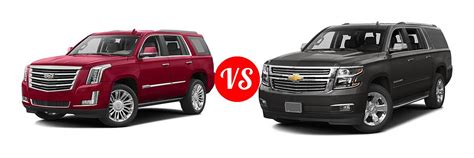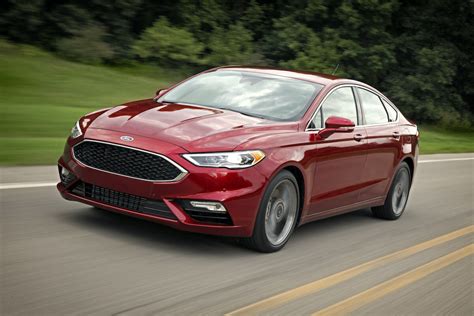When it comes to the luxurious world of SUVs, the Chevrolet Suburban and the Cadillac Escalade are two of the most popular choices. But how do these two vehicles stack up against each other? Is the Suburban bigger than the Escalade? Let’s get into the details and see.
The exterior size of the Suburban is the first comparison. The Suburban measures 224.4 inches in length, 80.5 inches in width, and 74.4 inches in height. The Escalade, on the other hand, is a bit smaller, measuring 207.9 inches in length, 80 inches in width, and 74.4 inches in height. This means that the Suburban is 16.5 inches longer than the Escalade. In terms of overall size, the Suburban is the bigger of the two vehicles.
The interior of the Suburban is also larger than that of the Escalade. The Suburban offers a maximum of 121.7 cubic feet of passenger volume, while the Escalade offers a maximum of 103.2 cubic feet of passenger volume. This means that the Suburban has 18.5 cubic feet more passenger space than the Escalade.
In terms of cargo capacity, the Suburban offers a maximum of 121.7 cubic feet of cargo volume, while the Escalade offers a maximum of 94.2 cubic feet of cargo volume. This means that the Suburban has 27.5 cubic feet more cargo space than the Escalade.
In terms of price, the Suburban is the more affordable option of the two. The Suburban starts at $51,700, while the Escalade starts at $76,490. This means that the Escalade has a base price that is $24,790 higher than the Suburban.
In conclusion, it is clear that the Chevrolet Suburban is the bigger vehicle when compared to the Cadillac Escalade. The Suburban is 16.5 inches longer, has 18.5 cubic feet more passenger volume, and 27.5 cubic feet more cargo volume. In addition, the Suburban is also more affordable than the Escalade, with a base pricetag that is $24,790 lower. So if you are looking for a bigger SUV, then the Chevrolet Suburban is definitely the way to go.
Comparing The Size Of A Suburban Vs. An Escalade
Comparing the size of a Suburban and an Escalade provides an interesting look at two of the most popular SUVs on the market today.
The Suburban is the longest SUV currently available, measuring 224.3 inches in length. It stands 75.4 inches tall and has a wheelbase of 130.0 inches. The Escalade, meanwhile, is slightly shorter at 207.2 inches long, but slightly taller at 76.4 inches in height. It has a wheelbase of 116.0 inches.
However, the Suburban has more interior room. It has a maximum cargo capacity of 121.7 cubic feet and seating for up to nine passengers, with three rows of seating. The Escalade, on the other hand, has a maximum cargo capacity of 94.2 cubic feet and seating for up to seven passengers, with two rows of seating.
In terms of power, the Suburban has a 5.3-liter EcoTec3 V8 engine and six-speed automatic transmission. It offers up to 355 horsepower and 383 lb-ft of torque. The Escalade has a 6.2-liter V8 engine and eight-speed automatic transmission. It offers up to 420 horsepower and 460 lb-ft of torque.
In terms of price, the Suburban starts at around $50,000, while the Escalade starts at around $75,000.
To sum up, the Suburban is longer and wider than the Escalade, and it has more interior room. However, the Escalade has more power and costs more.
Determining The Bigger Vehicle: Suburban Or Escalade?
Are you trying to decide between a Suburban and an Escalade for your next vehicle purchase? Both are full-size SUVs that offer plenty of power and room for passengers and cargo. But which one is bigger?
The Suburban is longer than the Escalade, with a wheelbase of 130.5 inches for the Suburban compared to 116.0 inches for the Escalade. In terms of width, the Suburban is also wider than the Escalade, with a width of 80.5 inches for the Suburban compared to 79.1 inches for the Escalade. For length, the Suburban is 211.9 inches in length, compared to 203.9 inches for the Escalade.
The Suburban also offers more interior space than the Escalade. The Suburban has a cargo volume of 121.7 cubic feet, compared to 94.2 cubic feet for the Escalade. The Suburban also offers more headroom and legroom than the Escalade. For front passengers, the Suburban has 41.3 inches of headroom and 44.5 inches of legroom, compared to 38.9 inches of headroom and 43.0 inches of legroom for the Escalade.
In terms of features, the Suburban comes standard with a 5.3L V8 engine, while the Escalade has a 6.2L V8 engine. The Suburban also offers a 10-speed automatic transmission, while the Escalade comes with an 8-speed automatic transmission. Both vehicles offer all-wheel drive as an option.
In terms of pricing, the Suburban starts at $52,295 and the Escalade starts at $74,795. Both vehicles come with a variety of features and options that can add to the cost, so make sure to consider all of the available features when comparing prices.
After considering all of the factors, it’s clear that the Suburban is the larger of the two vehicles. It offers more interior space, a longer wheelbase, and a more powerful engine. However, the Escalade may be a better choice if you’re looking for luxury features. Ultimately, the choice between the two vehicles comes down to your budget and desired features.
Suburban is one of the vehicles that is larger than an Escalade.
The Suburban is generally considered to be a full size SUV while the Escalade is a mid-size, so the Suburban is larger than the Escalade.
The Suburban is typically more expensive than the Escalade, though the exact difference will depend on the specific features and trim levels.
Other vehicles that are similar in size to the Suburban include the GMC Yukon, Chevrolet Tahoe, and Ford Expedition.
Yes, an Escalade is capable of towing a trailer, though its towing capacity is lower than that of the Suburban.
Yes, the Suburban generally features more seating capacity than the Escalade.
The Suburban typically has a V8 engine, though some models may have a V6 engine.
Yes, the Suburban typically has better gas mileage than the Escalade.
The Suburban typically has more than double the cargo space of the Escalade.
Both the Suburban and Escalade offer a variety of safety features, such as lane departure warning, blind spot monitoring, and rear cross-traffic alert.






